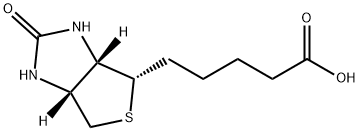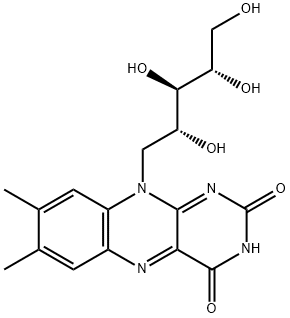Retinyl propionate
Synonym(s):Retinyl propionate;Vitamin A propionate
- CAS NO.:7069-42-3
- Empirical Formula: C23H34O2
- Molecular Weight: 342.51
- MDL number: MFCD00129785
- EINECS: 230-363-2
- SAFETY DATA SHEET (SDS)
- Update Date: 2024-11-14 14:09:35

What is Retinyl propionate?
Description
Retinyl propionate (RP) is a less well-known, but pretty interesting member of the retinoids, aka the "royal family of skincare".Similar to retinyl palmitate, retinyl Propionate is also a retinol ester with retinol and propionic acid being attached together.
Chemical properties
Thick Yellow Oil
The Uses of Retinyl propionate
Retinyl Propionate is a Vitamin A ester derivative. Retinyl Propionate is a hypermitotic agent that is used in cosmetic formulations.
The Uses of Retinyl propionate
Retinyl Propionate is a Vitamin A ester derivative. Retinyl Propionate is a hypermitotic agent that is used in cosmetic formulations.This compound contains an unknown cis isomer.
What are the applications of Application
Retinyl propionate is Retinyl propionate is a retinoid which exist as many geometric isomers due to the unsaturated bonds in the aliphatic chain
Biochem/physiol Actions
Retinyl propionate, a derivative of retinol, is a fatty acid that is used as a sample preparation for copper-complexed collagen[1]. In metabolic processes, retinyl propionate is metabolized primarily into retinol (ROL) in the viable epidermis and dermis whereas ROL is esterified into retinyl palmitate (RPalm) and metabolized into the inactive retinoid 14‐hydroxy‐4,14‐retro‐retinol (14‐HRR)[2]. Retinol and its derivatives effectively intervene in the skin aging process. The matrix effect of retinyl propionate can be seen in the skin cells, bone cells, and cartilage tissue. Retinyl propionate has been shown to increase calcium pantothenate transport rates in human serum and also has a film-forming polymer effect.
Side Effects
Side effects of using retinol may include: redness, irritation, burning, itching, dry skin, flaking and peeling of the skin, increased sensitivity to the sun, and skin cancer.
Structure and conformation
Retinyl propionate is closest in molecular size to pure retinoic acid with just three additional carbons. Vitamin A palmitate has an additional 16 carbons, making it too large to reach the dermis effectively.
References
[1] Wang Q, et al. The synergistic effect of retinyl propionate and hydroxypinacolone retinoate on skin aging. Journal of Cosmetic Dermatology, 2023; 22: 2040-2049.
[2] Yang Y, et al. Hydrophobically modified inulin based nanoemulsions for enhanced stability and transdermal delivery of retinyl propionate. Colloids and Surfaces A: Physicochemical and Engineering Aspects, 2022; 653: 129883.
Properties of Retinyl propionate
| Boiling point: | 453.7±14.0 °C(Predicted) |
| Density | 0.963±0.06 g/cm3(Predicted) |
| vapor pressure | 0-0Pa at 20-96.2℃ |
| Flash point: | 128 °C |
| storage temp. | 2-8°C |
| solubility | Chloroform (Slightly), DMSO (Slightly), Ethyl Acetate (Slightly) |
| form | Oil |
| color | Pale Yellow to Yellow Thick |
| BRN | 2475675 |
| Stability: | Light Sensitive |
Safety information for Retinyl propionate
| Signal word | Danger |
| Pictogram(s) |
 Health Hazard GHS08 |
| GHS Hazard Statements |
H360:Reproductive toxicity H413:Hazardous to the aquatic environment, long-term hazard |
| Precautionary Statement Codes |
P201:Obtain special instructions before use. P273:Avoid release to the environment. P308+P313:IF exposed or concerned: Get medical advice/attention. |
Computed Descriptors for Retinyl propionate
Retinyl propionate manufacturer
Neugen Labs
New Products
(S)-3-Aminobutanenitrile hydrochloride 4-Methylphenylacetic acid N-Boc-D-alaninol N-BOC-D/L-ALANINOL Tert-butyl bis(2-chloroethyl)carbamate 3-Morpholino-1-(4-nitrophenyl)-5,6-dihydropyridin- 2(1H)-one Furan-2,5-Dicarboxylic Acid Tropic acid 1-Bromo-3,5-Di-Tert-Butylbenzene S-2-CHLORO PROPIONIC ACID ETHYL ISOCYANOACETATE 2-Bromo-1,3-Bis(Dimethylamino)Trimethinium Hexafluorophosphate 4-IODO BENZOIC ACID 3-NITRO-2-METHYL ANILINE 1-(2,4-DICHLOROPHENYL) ETHANAMINE (2-Hydroxyphenyl)acetonitrile 4-Bromopyrazole 2-(Cyanocyclohexyl)acetic acid 4-methoxy-3,5-dinitropyridine 1-(4-(aminomethyl)benzyl)urea hydrochloride 2-aminopropyl benzoate hydrochloride diethyl 2-(2-((tertbutoxycarbonyl)amino) ethyl)malonate tert-butyl 4- (ureidomethyl)benzylcarbamate Ethyl-2-chloro((4-methoxyphenyl)hydrazono)acetateRelated products of tetrahydrofuran








You may like
-
 7069-42-3 Vitamin A propionate 98%View Details
7069-42-3 Vitamin A propionate 98%View Details
7069-42-3 -
 Retinyl propionate CAS 7069-42-3View Details
Retinyl propionate CAS 7069-42-3View Details
7069-42-3 -
 Retinyl Propionate CAS 7069-42-3View Details
Retinyl Propionate CAS 7069-42-3View Details
7069-42-3 -
 1975-50-4 98%View Details
1975-50-4 98%View Details
1975-50-4 -
 2-HYDROXY BENZYL ALCOHOL 98%View Details
2-HYDROXY BENZYL ALCOHOL 98%View Details
90-01-7 -
 2-Chloro-1,3-Bis(Dimethylamino)Trimethinium Hexafluorophosphate 221615-75-4 98%View Details
2-Chloro-1,3-Bis(Dimethylamino)Trimethinium Hexafluorophosphate 221615-75-4 98%View Details
221615-75-4 -
 14714-50-2 (2-Hydroxyphenyl)acetonitrile 98+View Details
14714-50-2 (2-Hydroxyphenyl)acetonitrile 98+View Details
14714-50-2 -
 118753-70-1 98+View Details
118753-70-1 98+View Details
118753-70-1